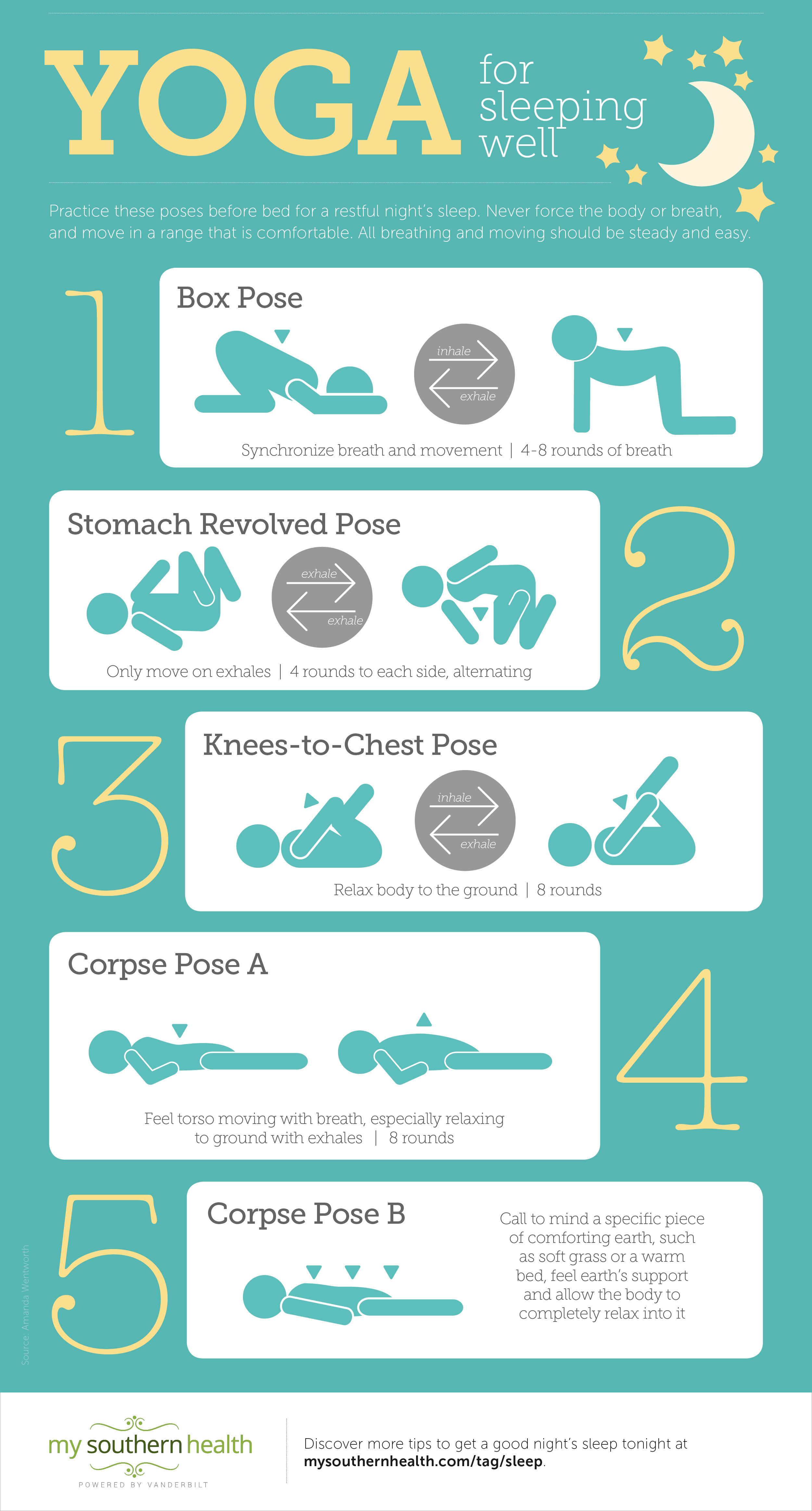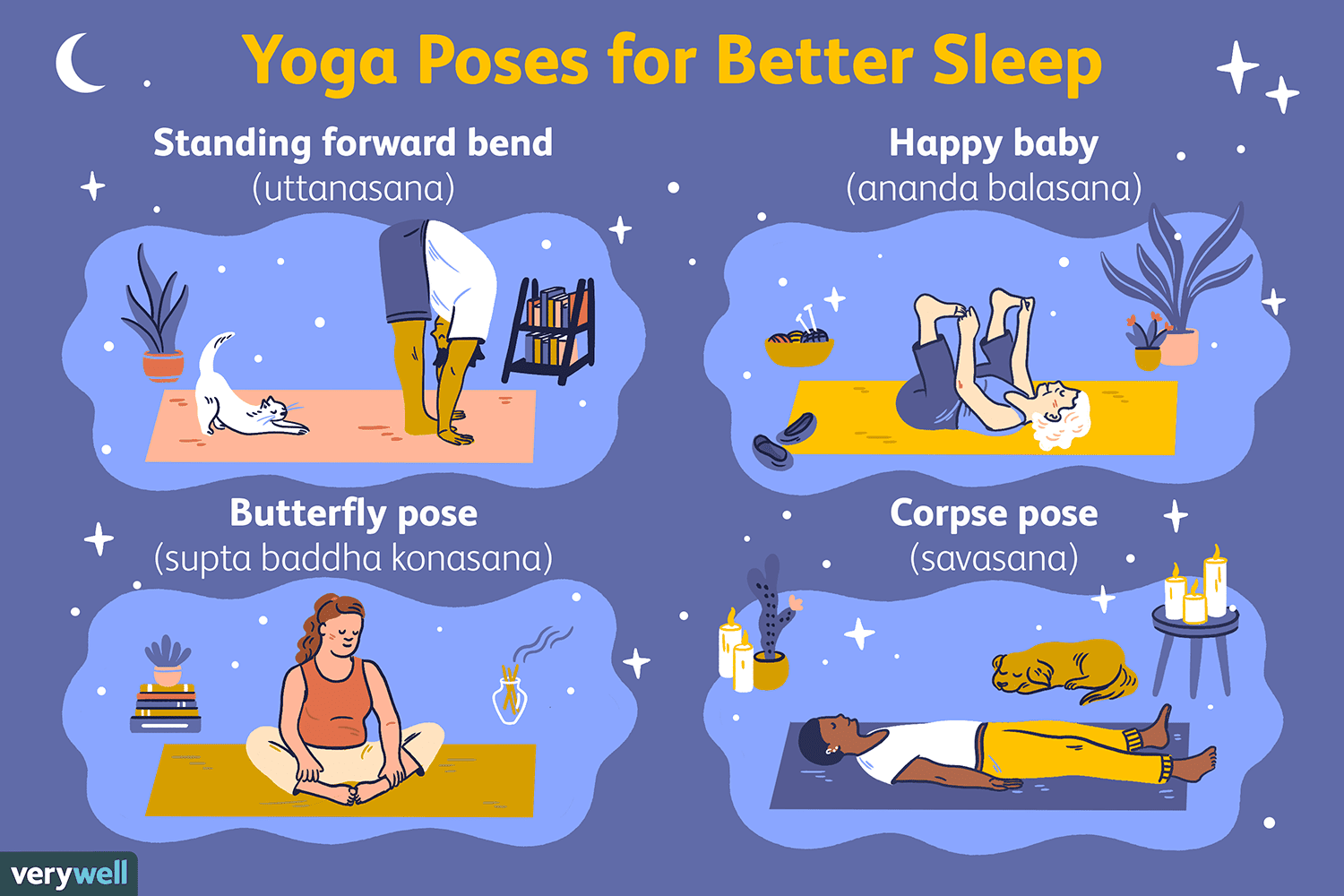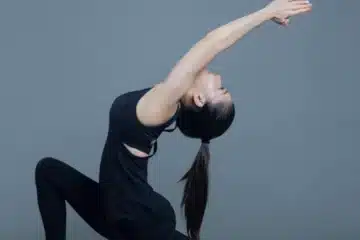Unwind with restorative yoga sequences for bedtime to relax and prepare for sleep. These gentle and calming poses help release tension, calm the mind, and promote deep relaxation to improve the quality of your sleep.
By incorporating restorative yoga into your bedtime routine, you can experience a sense of tranquility and ease both physically and mentally, setting the stage for a peaceful and restful night’s sleep. So, let’s explore some restorative yoga sequences to help you unwind and prepare for a rejuvenating slumber.
Benefits Of Restorative Yoga
Restorative yoga is a gentle and calming practice that focuses on deep relaxation and rejuvenation. It is the perfect way to unwind before bed and prepare your mind and body for a restful night’s sleep. There are several benefits of incorporating restorative yoga into your bedtime routine.
Improved Sleep Quality
Restorative yoga helps improve the quality of your sleep by promoting relaxation and reducing tension in the body. The gentle stretches and restful poses release muscular and mental tension, allowing you to sleep more deeply and wake up feeling refreshed.
| Benefits of Improved Sleep Quality: |
|---|
| Improved mental clarity |
| Increased energy levels throughout the day |
| Enhanced mood and emotional well-being |
| Improved immune function |
Reduced Stress And Anxiety
Restorative yoga is an effective tool for reducing stress and anxiety. The slow-paced and gentle nature of the practice activates the parasympathetic nervous system, which promotes relaxation and calms the mind. Through deep breathing and gentle stretching, restorative yoga helps release built-up tension and anxious thoughts, allowing you to enter a state of tranquility before bed.
| Benefits of Reduced Stress and Anxiety: |
|---|
| Decreased heart rate and blood pressure |
| Enhanced emotional well-being and mood |
| Improved cognitive function and concentration |
| Reduced risk of stress-related illnesses |
Incorporating restorative yoga into your bedtime routine can help improve sleep quality, reduce stress, and promote overall well-being. By dedicating a few minutes to these restorative yoga sequences, you can ensure a peaceful and rejuvenating night’s sleep.

Credit: yogauonline.com
Preparing Your Space
Preparing your space for restorative yoga before bed is essential to create a tranquil environment that promotes relaxation and inner peace. By setting the right ambiance and gathering the necessary props, you can enhance your bedtime yoga practice, allowing your mind and body to unwind fully.
Creating A Calming Environment
To create a calming environment for your restorative yoga practice, consider dimming the lights or using soft, warm lighting. Use soothing colors, such as blues or pastels, that promote relaxation. Adding comfortable pillows and a cozy throw blanket can help create a serene atmosphere. Reduce noise and distractions by playing gentle music or nature sounds to foster a peaceful setting.
Gathering Props
When practicing restorative yoga before bed, gathering props can significantly enhance your practice. Consider utilizing supportive props such as yoga bolsters, blocks, and blankets to provide comfort and assistance during the poses. By having these props readily available in your designated space, you can seamlessly transition from winding down to bedtime yoga.
Restorative Poses For Relaxation
Restorative yoga sequences can be incredibly beneficial for winding down before bed. These poses help to release tension, calm the mind, and prepare the body for a restful night’s sleep. By incorporating restorative poses into your bedtime routine, you can create a sense of tranquility and promote deep relaxation, allowing you to fully unwind and prepare for a peaceful sleep.
Supported Child’s Pose
One of the most comforting restorative poses is the Supported Child’s Pose. This gentle forward bend allows the body to relax and release tension in the lower back, hips, and shoulders. Placing a bolster or a stack of pillows under the chest and forehead provides support, creating a soothing sensation for the mind and body. This pose is ideal for calming the nervous system and promoting a sense of deep relaxation.
Reclining Bound Angle Pose
The Reclining Bound Angle Pose, also known as Supta Baddha Konasana, is a restorative pose that opens the chest and hips, promoting a deep sense of relaxation. By lying on your back with the soles of your feet together and knees open to the sides, you can release tension in the groin and hip area. This pose can be enhanced by placing bolsters or pillows under the thighs and allowing the arms to rest comfortably at the sides. It is an excellent choice for easing the body and mind into a state of peaceful rest.

Credit: www.pinterest.com
Breathing Techniques For Relaxation
Explore soothing breathing techniques to unwind before bed and restore your body and mind with restorative yoga sequences designed for bedtime relaxation. Discover the power of deep, intentional breaths that can help promote a sense of calmness and prepare you for a peaceful night’s sleep.
Breathing techniques play a vital role in promoting relaxation and preparing the mind and body for a restful night’s sleep. By focusing on the breath, we can calm the nervous system and release any tension or stress accumulated throughout the day. In this section, we will explore two powerful breathing techniques – the 4-7-8 Breath and Alternate Nostril Breathing – to help you unwind before bed and create a peaceful state of mind.
4-7-8 Breath
The 4-7-8 Breath technique is a simple yet effective method for inducing relaxation and reducing anxiety. To practice this technique, find a comfortable position in bed and close your eyes. Begin by inhaling gently through your nose for a count of four. Then, hold your breath for a count of seven. Finally, exhale slowly through your mouth for a count of eight. Repeat this cycle four to eight times, focusing on the rhythm of your breath and letting go of any tension with each exhale.
Alternate Nostril Breathing
Alternate Nostril Breathing is a yogic technique that helps balance the flow of energy throughout the body and promote mental clarity. To practice this technique, sit comfortably with your spine straight. Rest your left hand on your lap and bring your right hand towards your face. Using your right thumb, block your right nostril and inhale deeply through your left nostril. Then, release the right nostril and block the left nostril with your ring finger. Exhale slowly and completely through your right nostril. Continue this pattern, inhaling through the left nostril and exhaling through the right nostril, for several rounds. Allow your breath to become smooth and steady, and feel the calming effect it has on your mind and body. Incorporating these breathing techniques into your bedtime routine can have a profound impact on your ability to relax and improve the quality of your sleep. Take a few minutes each night to focus on your breath and let go of any thoughts or worries. By practicing these techniques consistently, you will cultivate a sense of calm and prepare yourself for a peaceful night of restorative sleep. So, why not give these breathing techniques a try tonight and experience the benefits for yourself?
Guided Meditations For Bedtime
When it’s time to unwind and prepare for a restful night’s sleep, guided meditations can be a powerful tool to quiet the mind and relax the body. These meditations provide gentle guidance and prompts to help you enter a state of deep relaxation, making them perfect for incorporating into your bedtime routine. Let’s explore two popular guided meditations that are effective for improving sleep quality: Body Scan Meditation and Loving-Kindness Meditation.
Body Scan Meditation
Body Scan Meditation is a practice that involves systematically shifting your attention through different areas of your body, bringing awareness and releasing tension. This meditation can help you become more mindful of your body and its sensations, promoting relaxation and aiding in sleep. Here’s how you can incorporate Body Scan Meditation into your bedtime routine:
- Find a comfortable position in bed, either lying on your back or in a supported reclined position.
- Close your eyes and take a few deep, slow breaths to center yourself.
- Begin by directing your attention to your toes. Notice any sensations or tension in this area, and release any tension as you exhale.
- Moving up from your toes to your feet, ankles, calves, and so on, continue to scan your body, releasing tension and allowing each area to relax.
- As you work your way up the body, notice any areas that are holding tension or discomfort, and consciously let go of any tension you find.
- Once you’ve reached the top of your head, take a few moments to focus on your entire body as a whole, feeling a sense of relaxation and calm.
Loving-kindness Meditation
Loving-Kindness Meditation, also known as Metta Meditation, is a practice that cultivates feelings of love, kindness, and compassion towards yourself and others. This meditation can help generate positive emotions and reduce stress or anxiety that might interfere with falling asleep. Here’s how you can incorporate Loving-Kindness Meditation into your bedtime routine:
- Begin by finding a comfortable position in bed, just like you did for Body Scan Meditation.
- Close your eyes and take a few deep breaths to center yourself.
- Repeat the following phrases silently or out loud:
- May I be safe and protected.
- May I be healthy and strong.
- May I be happy and at peace.
- May I live with ease.
- After focusing on yourself, begin extending these wishes to others, starting with someone you love:
- May they be safe and protected.
- May they be healthy and strong.
- May they be happy and at peace.
- May they live with ease.
- Expand your circle of well-wishing to include neutral people and eventually even those you may find difficult or challenging.
- After spending a few minutes sending loving-kindness to others, return your focus to yourself and take a few deep breaths.
By incorporating these guided meditations into your bedtime routine, you can create a calm and peaceful mindset that promotes restful sleep. Experiment with different lengths of time for the meditations and find what works best for you. Remember, consistency is key when establishing a new practice, so try to make these guided meditations a regular part of your nighttime rituals. Sleep tight!

Credit: my.vanderbilthealth.com
Frequently Asked Questions On Unwind Before Bed: Restorative Yoga Sequences For Bedtime
Q: What Are The Benefits Of Practicing Restorative Yoga Before Bed?
A: Practicing restorative yoga before bed helps to relax the body and mind, decrease stress and anxiety, improve sleep quality, release tension and tightness in the muscles, and promote a deep sense of relaxation and rejuvenation for a more restful night’s sleep.
Q: Can Restorative Yoga Help With Insomnia?
A: Yes, restorative yoga can be a helpful practice for individuals experiencing insomnia. The slow and gentle nature of restorative yoga poses, combined with deep breathing and relaxation techniques, can calm the nervous system and promote a state of relaxation and tranquility, making it easier to fall asleep and stay asleep.
Q: How Long Should A Restorative Yoga Sequence Be Before Bedtime?
A: A restorative yoga sequence before bedtime can range from 10 to 30 minutes, depending on your available time and needs. It’s important to prioritize quality over quantity, focusing on a few key poses that help you to unwind, relax, and prepare your body and mind for a restful night’s sleep.
Q: Is It Necessary To Use Props For Restorative Yoga Before Bed?
A: While props are not mandatory, they can greatly enhance the experience and benefits of restorative yoga before bed. Props like bolsters, blankets, and blocks provide support and help to gently open the body, allowing for a deeper relaxation and stress release.
However, modifications can be made without props if necessary.
Conclusion
Incorporating restorative yoga sequences into your bedtime routine can be a game-changer. These gentle and calming poses help release tension and promote deep relaxation, setting the stage for a restful night’s sleep. By prioritizing self-care and taking the time to unwind before bed, you’ll reap the benefits of improved sleep quality and overall well-being.
Remember to listen to your body, breathe mindfully, and let go of stress. Give these restorative yoga sequences a try and prepare to experience a more peaceful and rejuvenating slumber. Sweet dreams!



